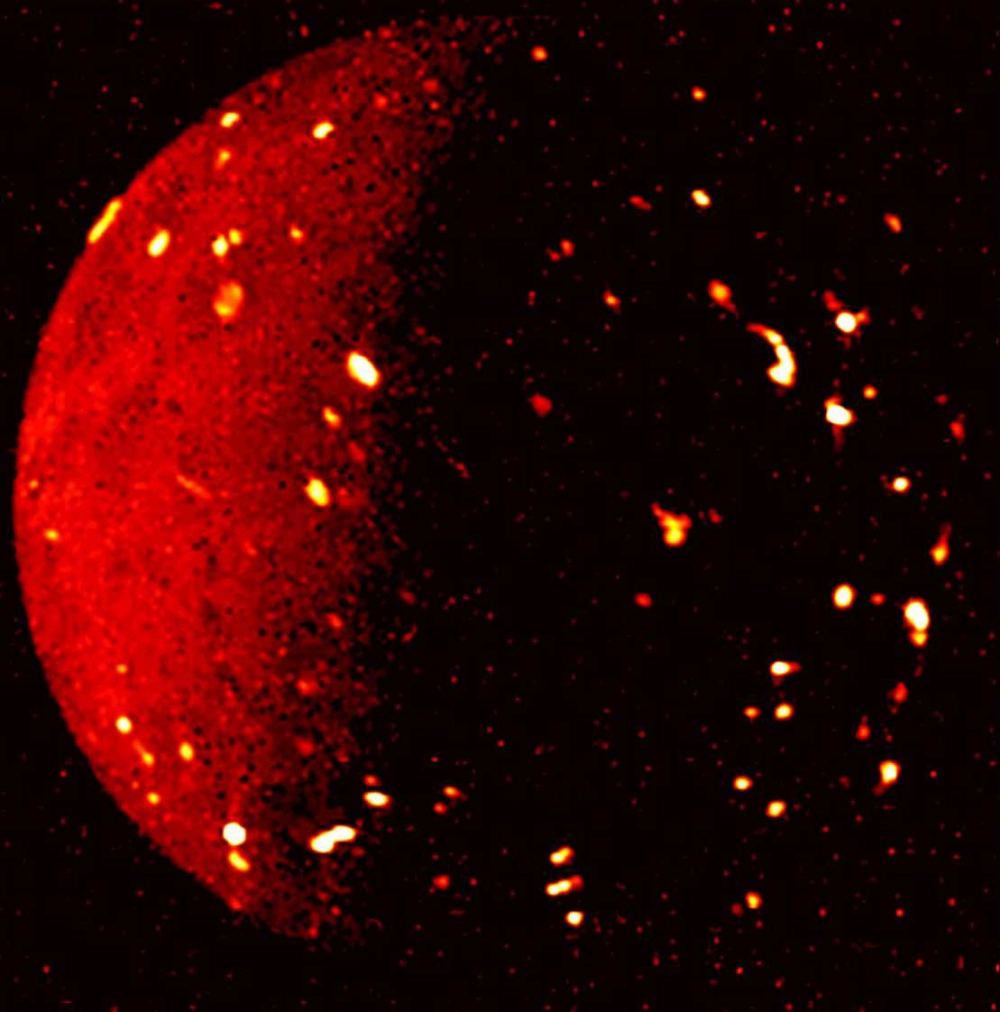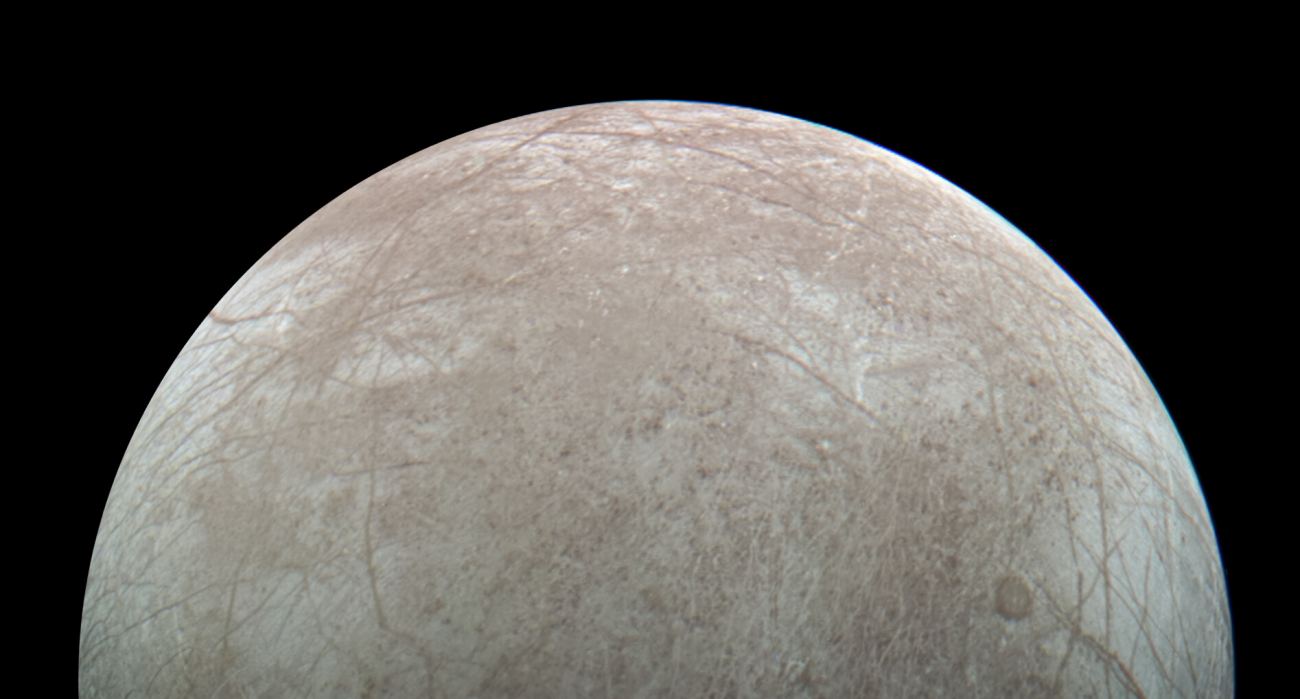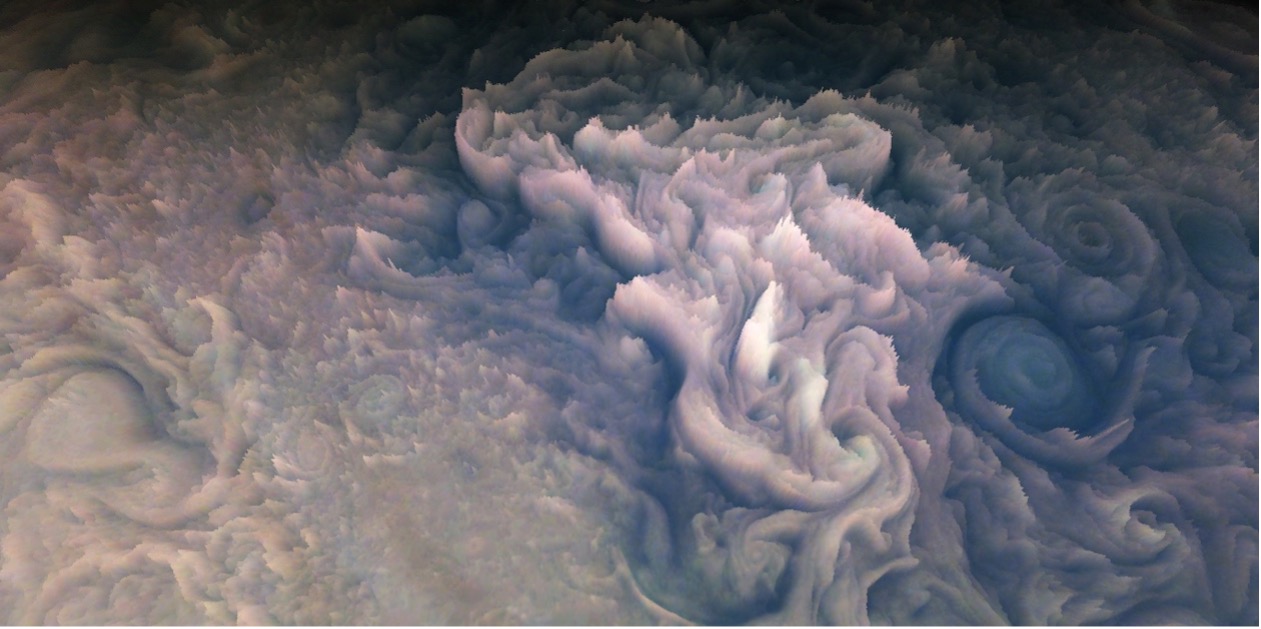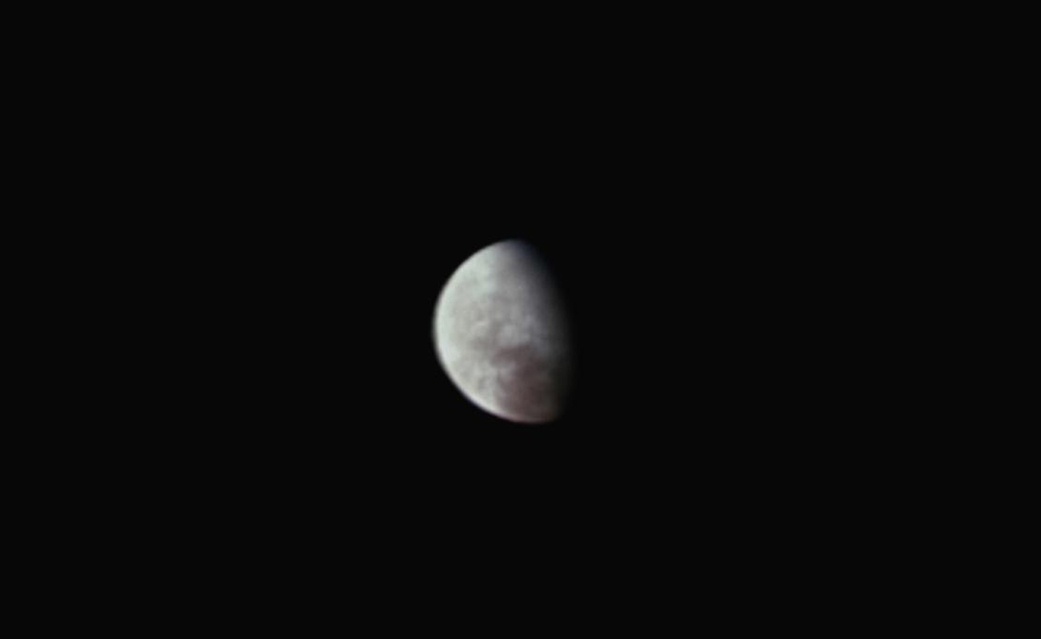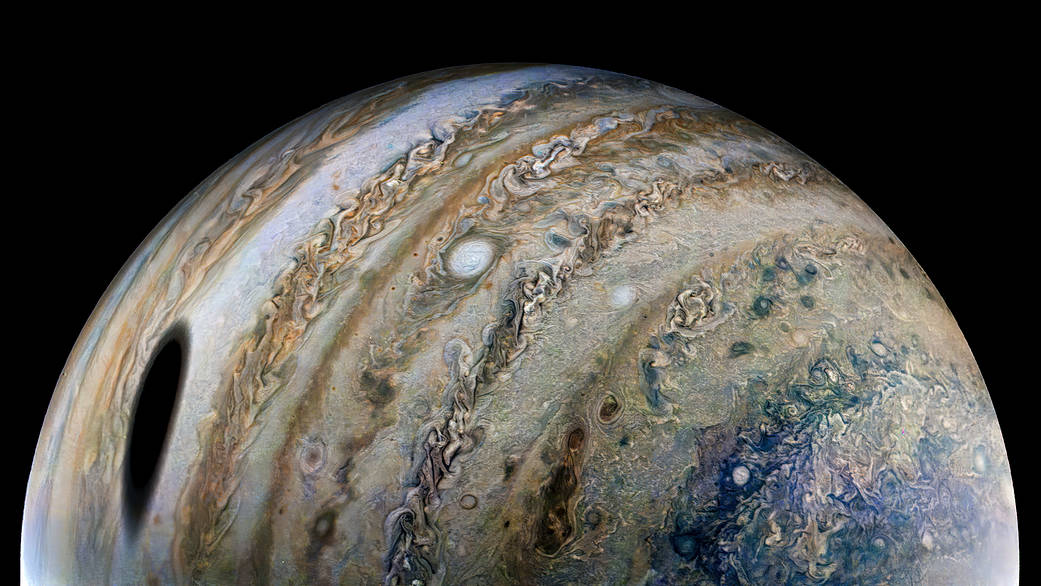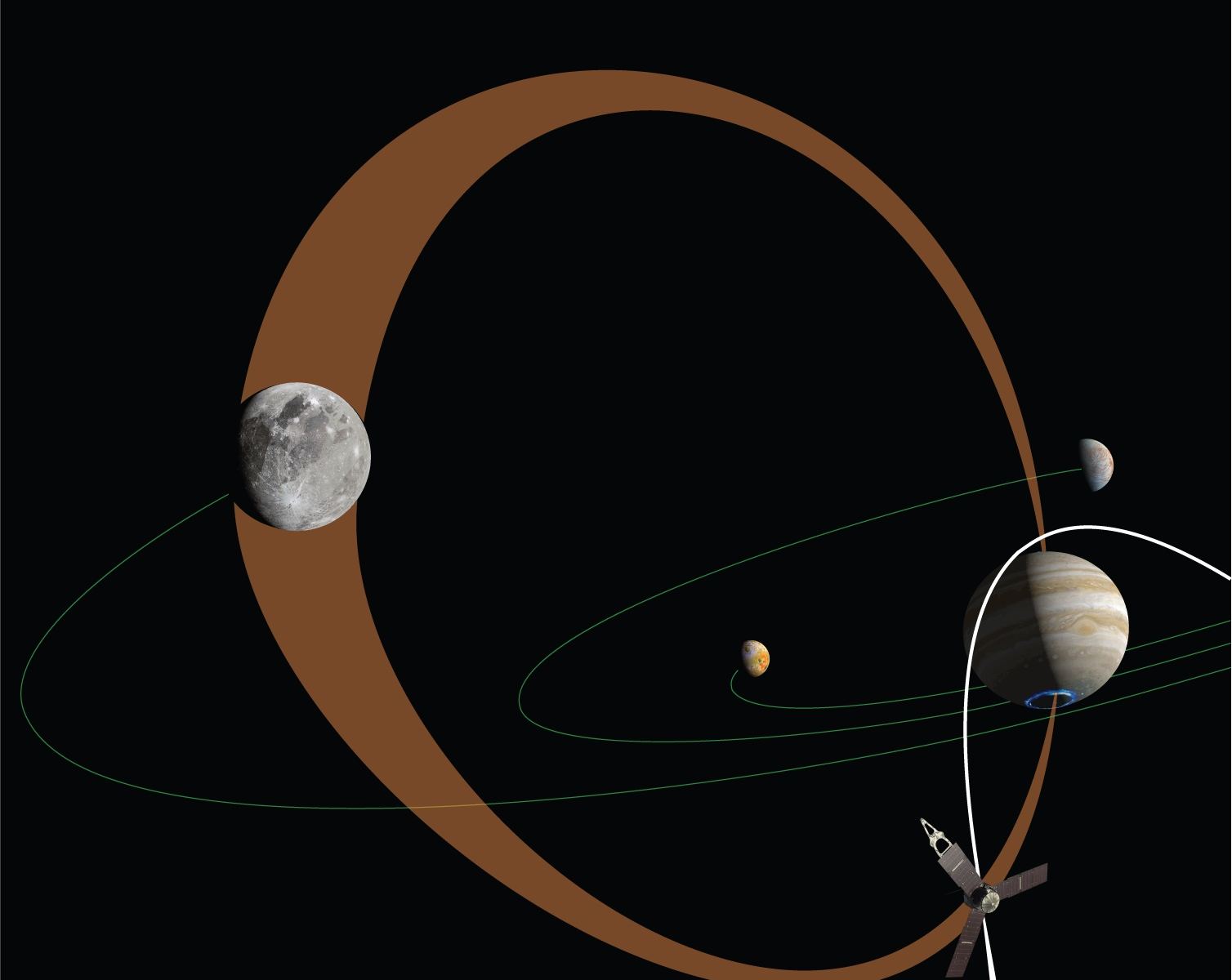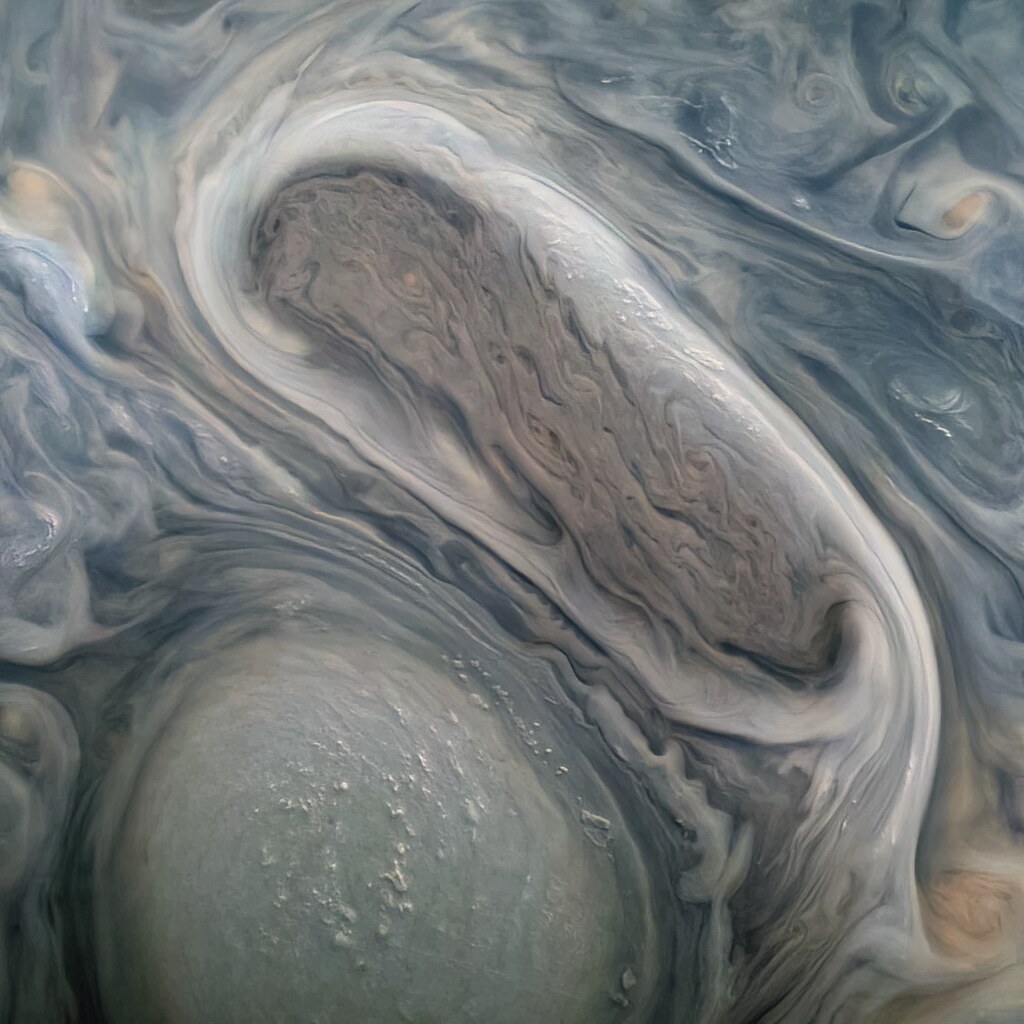In July 2016, NASA’s Juno space probe reached Jupiter, becoming the second spacecraft in history to orbit the gas giant (the first being the Galileo probe that orbited Jupiter from 1995 to 2003). The data it has sent back has led to new revelations about the Jovian atmosphere, magnetosphere, gravitational field, structure, and composition. While its primary mission was intended to only last until 2018, a mission extension means that Juno will continue to orbit Jupiter’s poles (a perijove maneuver) and send back stunning images and data until 2025.
Recently, a team of citizen scientists led by mathematician and software developer Gerald Eichstädt used images taken by the probe’s visible-light camera/telescope (the JunoCam) to create a 3D animation of Jupiter’s upper atmosphere. Eichstädt’s animation was presented at the 2022 Europlanet Science Congress (EPSC), which took place from September 18 – 23 in Granada, and shows the relative heights of the cloud tops of Jupiter that reveal delicately textured swirls and peaks. Eichstädt’s work also showcased the potential for citizen science and public engagement with today’s missions.
Continue reading “A Fascinating Look at Jupiter's Clouds Where the Light Intensity is Converted Into 3D”


